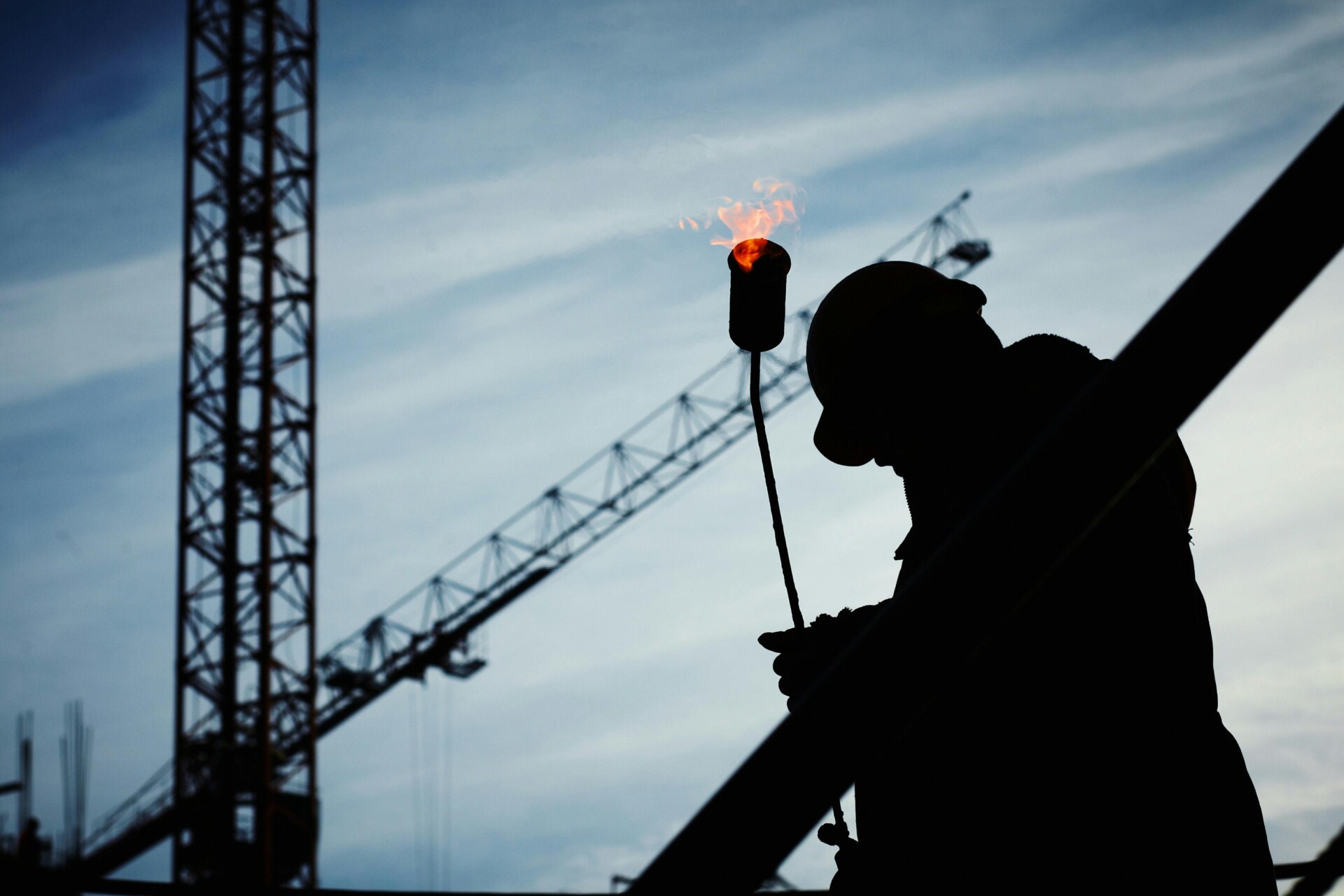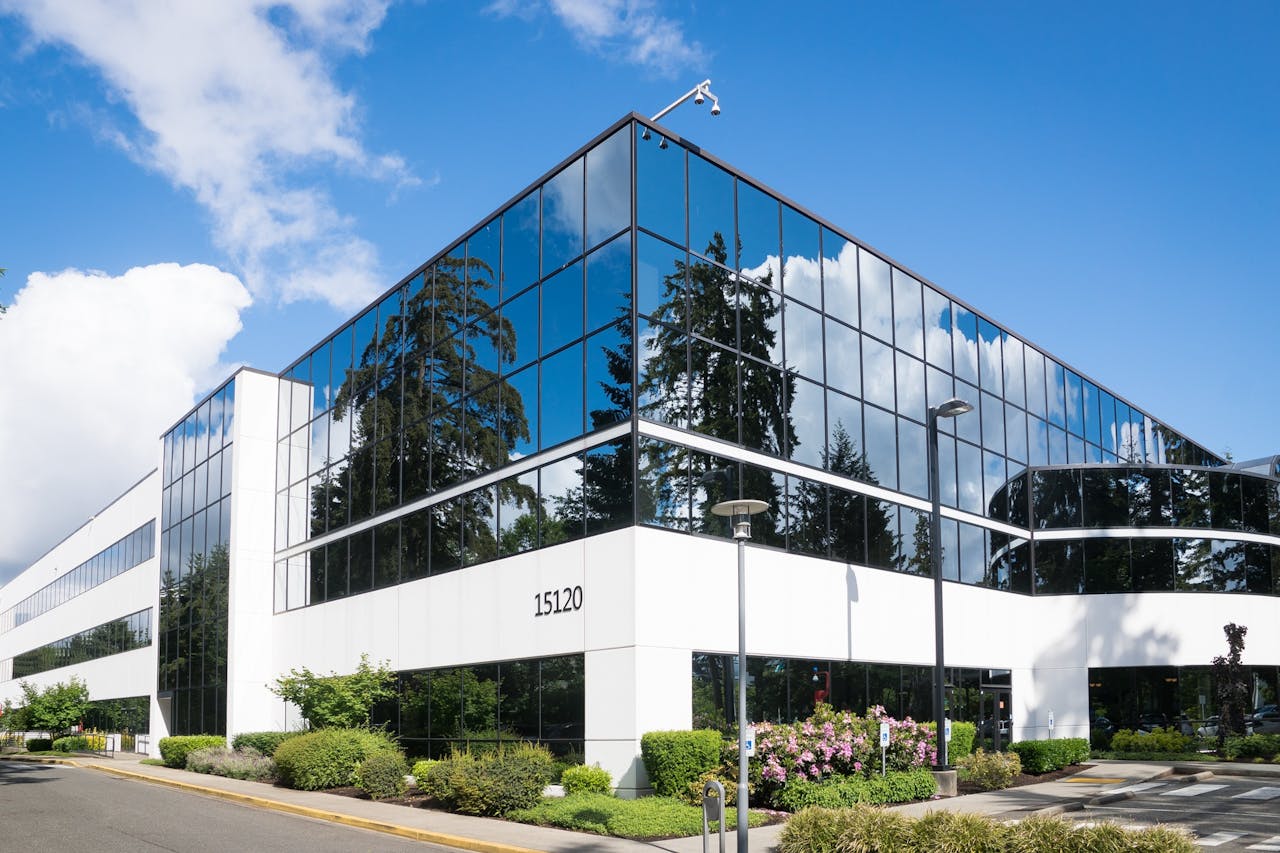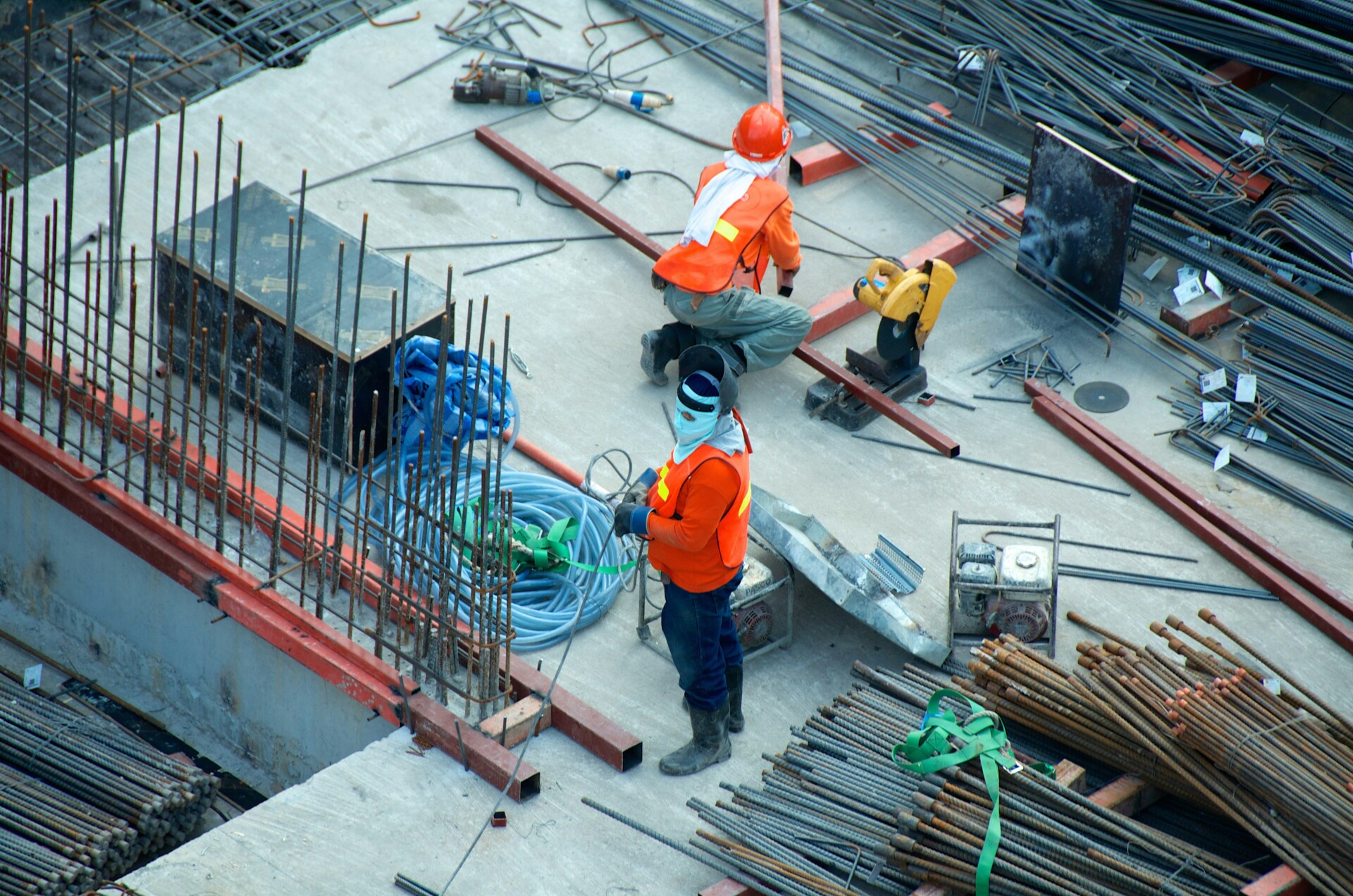Commercial building remodeling involves making significant structural and functional changes to existing business spaces. Unlike simple renovations, remodeling projects substantially alter both interior and exterior elements of commercial properties. We execute extensive modifications to offices, hotels, restaurants, retail stores, and other commercial buildings to enhance their functionality, safety, and overall appeal.
When we undertake a commercial remodel, we are not just refreshing the aesthetics. Our work encompasses substantial reconstructions, additions, and system upgrades, all while working within the framework of the existing structure. This process allows us to reinforce the building’s structural integrity and optimize key systems to better serve modern business needs.
The scope of commercial remodeling reaches far beyond cosmetic updates. We reconfigure layouts, upgrade electrical and plumbing infrastructure, install new HVAC systems, and execute other major alterations that transform how a space functions. Whether it’s turning an outdated office into an open, collaborative environment or completely reimagining a retail space, commercial remodeling revitalizes business properties.
What Are the Key Benefits of Remodeling a Commercial Building?

Commercial remodeling offers numerous advantages that can transform an outdated space into a modern, efficient environment tailored to your business needs. At EB3 Construction, we have seen firsthand how strategic renovations can revitalize commercial properties and deliver tangible benefits. Here are some of the key advantages:
Maximizing Space Utilization
One significant benefit of commercial remodeling is the ability to optimize existing space. We often work with clients to convert cramped, compartmentalized layouts into open, flexible floor plans that foster collaboration and productivity. For instance, replacing traditional cubicles with adaptable workstations and shared spaces can dramatically improve workflow and employee satisfaction.
Enhancing Energy Efficiency
Upgrading outdated building systems during a remodel can lead to substantial energy savings. We frequently incorporate energy-efficient lighting, HVAC systems, and improved insulation to reduce utility costs and minimize environmental impact. These improvements not only lower operating expenses but also demonstrate a commitment to sustainability that resonates with environmentally conscious clients and employees.
Cost-Effective Alternative to New Construction
Remodeling an existing commercial space is often more economical than constructing a new building from the ground up. By leveraging the existing structure and infrastructure, we help businesses achieve their desired improvements without the extensive time and financial investments required for new construction. This approach allows for quicker project completion and a faster return to normal operations.
Improving Safety and Compliance
As building codes and safety regulations evolve, older commercial spaces may fall out of compliance. A comprehensive remodel provides an opportunity to address these issues, ensuring your building meets current standards for fire safety, accessibility, and structural integrity. We work closely with local authorities to navigate permitting processes and implement necessary upgrades, protecting your business from potential liabilities.
Boosting Brand Image and Customer Appeal
The visual appeal of your commercial space plays a crucial role in shaping perceptions of your brand. A thoughtfully designed remodel can create a powerful first impression, attracting new customers and reinforcing your brand identity. Whether it is a sleek, modern office or an inviting retail environment, we help businesses align their physical spaces with their brand values and market positioning.
By addressing these key areas through strategic remodeling, businesses can create more functional, efficient, and appealing commercial spaces. At EB3 Construction, we specialize in tailoring renovation projects to meet the unique needs of each client, ensuring that every remodel delivers maximum value and positions your business for future success.
What Does the Commercial Remodeling Process Involve?
The commercial remodeling process follows a structured sequence of stages to transform an existing space. We guide clients through each phase to ensure a smooth and successful project:
Design and Planning
We begin by working closely with clients to establish the project scope, budget, and timeline. Our team of architects and designers translates the client’s vision into detailed plans and specifications. This phase sets the foundation for the entire remodel.
Permitting and Approvals
Next, we handle all necessary permits and regulatory approvals. Our expertise in local building codes helps streamline this process and avoid delays. We coordinate with relevant authorities to ensure full compliance.
Material Procurement and Demolition
With approvals in hand, we source and order materials while preparing the site for construction. Careful demolition removes outdated elements while preserving structural integrity. Proper waste management keeps the site clean and safe.
Structural and Mechanical Work
This critical phase involves framing, electrical, plumbing, and HVAC installations. Our skilled tradespeople integrate new systems seamlessly into the existing structure. Regular quality checks maintain high standards throughout.
Inspections and Compliance
We coordinate inspections at key milestones to verify code compliance. Our proactive approach helps identify and address any issues early, ensuring the project stays on track and meets all regulations.
Finishing Work
The final stages bring the new space to life, including installing flooring, painting walls, mounting fixtures, and adding design touches. Our attention to detail delivers a polished, professional result.
Project Closeout
We conduct thorough final inspections and resolve any remaining items. The space is then ready for client walkthrough and approval. We provide all necessary documentation and warranties before handover.
By carefully managing each of these phases, we transform commercial spaces efficiently and effectively, minimizing disruptions while maximizing the value of the remodeled environment.
| Phase | Description |
|---|---|
| Design and Planning | Establish project scope, budget, and timeline; develop detailed plans and specifications. |
| Permitting and Approvals | Handle necessary permits; ensure compliance with local building codes. |
| Material Procurement and Demolition | Order materials; remove outdated elements while preserving structural integrity. |
| Structural and Mechanical Work | Framing, electrical, plumbing, and HVAC installations integrated into the existing structure. |
| Inspections and Compliance | Coordinate inspections to verify code compliance and address any issues early. |
| Finishing Work | Install flooring, paint, mount fixtures, and add design touches for a polished result. |
| Project Closeout | Conduct final inspections, resolve remaining items, and prepare space for client approval. |
How Should You Budget for a Commercial Building Remodel?

Budgeting for a commercial remodel requires careful consideration of various factors to ensure project success. Costs can vary widely depending on the scope and location, typically ranging from $20-30 per square foot for basic updates to over $500 per square foot for high-end, comprehensive renovations. Understanding the key components of a commercial remodel budget is essential for accurate planning.
Key Budget Components
The major cost categories in a commercial remodel budget include:
- Design and architectural services: Typically 4-20% of the total project cost, depending on complexity.
- Materials: A significant portion of the budget, with quality affecting both upfront costs and long-term durability.
- Labor: Usually accounts for 20-50% of the total budget.
Additional Budget Considerations
Several additional factors can impact the overall budget:
- Building class: Class A, B, or C buildings have different baseline costs and expectations.
- Intended use: Specialized renovations (e.g., restaurants or medical facilities) often incur higher costs.
- Regulatory compliance: Meeting updated building codes or ADA requirements can significantly add to expenses.
- Location: Labor and material costs vary by region.
Contingency Planning
An important aspect of budgeting for a commercial remodel is planning for the unexpected. Industry experts strongly recommend adding a 15% contingency to your initial budget. This buffer helps cover unforeseen expenses that frequently arise, such as:
- Hidden structural issues discovered during demolition.
- Unexpected material price increases.
- Changes in project scope as work progresses.
- Permitting or inspection delays.
By incorporating this contingency from the start, you’re better prepared to handle surprises without derailing the entire project budget.
While every project is unique, this comprehensive approach to budgeting can help ensure your commercial remodel stays on track financially. Working closely with experienced contractors and carefully documenting all cost estimates will further improve your chances of a successful renovation within your target budget.
How Do You Choose the Right Contractor for Commercial Remodeling?

Selecting the right contractor is crucial for a successful commercial remodel. At EB3 Construction, we understand the importance of finding a qualified professional to bring your vision to life while navigating the complexities of commercial projects. Here are some key factors to consider when choosing a contractor:
Experience and Expertise
We recommend looking for contractors with specific experience in commercial projects similar to yours. Our team has over 15 years of experience managing complex remodels across various industries. This specialized knowledge allows us to anticipate challenges and implement effective solutions.
Credentials and Compliance
It’s essential to verify a contractor’s licensing, insurance, and credentials. We maintain all necessary certifications and stay up-to-date on local building codes and regulations. This ensures your project meets all legal requirements and safety standards.
Communication and Organization
Evaluate potential contractors’ communication skills, organization, and attention to detail. These qualities are crucial for managing complex timelines and multi-level endeavors. Our project managers prioritize clear, consistent communication throughout the remodeling process.
Transparency and References
Request detailed bids, client testimonials, and examples of past work from prospective contractors. We provide comprehensive proposals and can connect you with past clients who can speak to our quality of work and professionalism.
Problem-Solving Questions to Ask
When vetting contractors, consider asking the following questions:
- How do you handle unexpected challenges or changes during a project?
- What is your process for managing and coordinating subcontractors?
- Can you provide examples of similar commercial remodels you’ve completed?
- How do you ensure compliance with local building codes and regulations?
- What is your approach to value engineering and cost management?
By thoroughly evaluating potential contractors using these criteria, you can select a partner who will effectively manage your commercial remodel from concept to completion. While we can’t speak to other contractors’ specific qualifications, we’re confident in our ability to meet and exceed these standards on every project we undertake.
| Quality | Description |
| Good Communication | A contractor should have excellent communication skills to ensure both parties understand one another and set clear expectations. |
| Highly Organized | Organizational skills are essential for planning, coordinating complex timelines, and ensuring project success. |
| Industry Knowledge | A deep understanding of building codes, safety regulations, and construction best practices helps ensure informed project decisions. |
| Attention to Detail | Pays close attention to all project details to prevent minor issues from becoming significant problems, ensuring a quality final product. |
| Positive Reputation and References | Client testimonials can provide insights into a contractor’s trustworthiness and quality of workmanship. |
| Credentials and Compliance | Ensuring contractors have the necessary licenses, permits, and insurance is essential for legal compliance and financial protection. |
| Cost Management | Accurate and fair bids help avoid unexpected expenses, while value engineering ensures projects remain within budget. |
| Project Management Skills | Managing resources and keeping projects on track and within budget requires strong leadership and decision-making abilities. |
Remember, the ideal contractor should offer transparent pricing, maintain clear communication, understand local building codes, and demonstrate strong abilities to address unexpected challenges. By carefully considering these factors, you’ll be well-equipped to choose a contractor who can bring your commercial remodeling vision to life efficiently and effectively.
Conclusion: Planning Your Commercial Building Remodel
Remodeling a commercial building is a significant investment that can transform your business space while increasing property value and operational efficiency. The success of your renovation undertaking depends on thorough planning, realistic budgeting, and assembling the right team of professionals. By understanding the remodeling process, preparing for potential challenges, and selecting qualified contractors, you can ensure your project enhances functionality and reflects your brand’s values.
A well-executed commercial remodel has the potential to provide substantial returns through improved aesthetics, energy efficiency, and better utilization of space. The investment may seem daunting, but the long-term benefits often far outweigh the costs. An updated facility can attract new clients, boost employee productivity, and position your business for future growth.
As you embark on your commercial renovation journey, remember that each decision made during the planning and execution phases will impact the final outcome. From selecting sustainable materials to optimizing layouts for improved workflow, every choice should align with your overall business objectives. By taking a holistic approach and considering both immediate needs and future aspirations, you’ll be better positioned to maximize the return on your remodeling investment.
With careful planning, preparation, realistic expectations, and the guidance of experienced professionals, your commercial remodel can be a catalyst for positive change within your organization. The space will not only meet your current operational needs but also provide the flexibility to adapt to future challenges and opportunities. As you move forward, stay focused on your vision for the project and trust in the process—the results can be truly transformative for your business.
Ready to take the next step in planning your commercial building remodel? Contact EB3 Construction today to discuss how we can help bring your vision to life.




